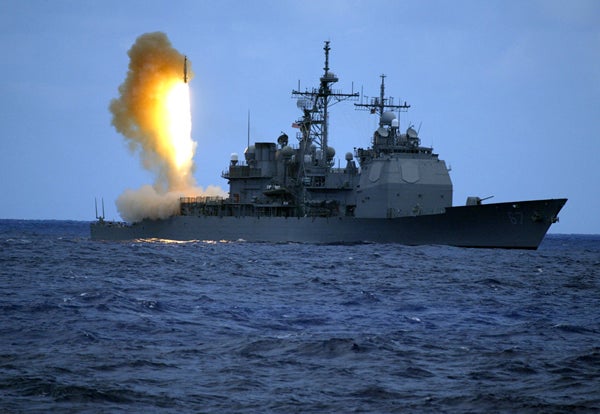The growing threat from long-range nuclear missiles endangers the lives of millions of Americans while upsetting regional and global stability. The latest flare-up on the Korean Peninsula is a sobering reminder of this harsh reality. To protect Americans effectively against rogue attacks in the near future, a rigorous program of missile defense testing must be implemented.
As Heritage’s Michaela Dodge explains, these tests must be challenging in order to provide the best protection for the U.S. and its allies. Although tougher tests will increase the likelihood of missing targets, they present learning opportunities that can improve our missile defenses.
In any missile defense test, judging the success or failure of a given test is usually determined by whether or not the target was successfully intercepted. However, that shouldn’t be the only—or even the primary—criterion for determining whether the test was a success or failure.
The core purpose of testing is, and must continue to be, to push systems to the point of failure. A “dumbed-down” test that ends with successful interception is of little value because it provides no new information that can be used to improve missile defenses. On the other hand, a well-constructed missile test can be of tremendous value even if the target evades interception.
“Failure” is a normal—in fact, necessary—part of experimentation and progress. This holds true for any field of scientific inquiry, including weapons development. The Polaris submarine-launched ballistic missile (SLBM), developed in the 1950s, “failed” 12 out of 17 times—all within a span of about a year. Despite this track record, the missile was deployed, and its many technical advances were incorporated later in the Trident SLBM.
If one looked only at the test “failures,” one could easily dismiss both systems as unproven and unreliable. In reality, the tests had been pushing technology to the extreme. As a result, the developers learned more, faster. The tests produced a complex technology so advanced that the Trident SLBM today stands as a bedrock of our strategic deterrent. It is expected to remain in service until 2040.
Defense systems can work, even if they fail to hit their targets every time during testing. Our sea-based Aegis Missile Defense system failed to destroy the target in six out of 30 tests, yet it is regarded today as the most effective component of U.S. missile defense.

